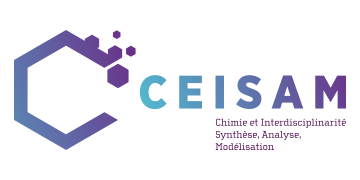
NeuroFlaviNA - Targeting Neuroinvasive Infections associated to Flaviviruses with Nucleoside Analogues
The aim of the NeuroFlaviNA project is to provide a complete pipeline to this endeavour directed towards pathogenic neurotropic Orthoflaviviruses of significant clinical impact.
Project summary
In recent years, and particularly since the alarming discovery that SARS-CoV-2 can cause neuroinvasion, responsible for long-standing cases of COVID, a new challenge has arisen: to effectively treat viral infections that develop in the brain, despite the fact that the brain is highly impermeable to drugs. Indeed, its particular structure and the unique presence of the blood-brain barrier (BBB) that protects it, make it a difficult organ to treat without causing serious neurotoxic side-effects.
The NeuroFlaviNa project aims to meet this challenge in the search for drug candidates against orthoflavivirus infections. One of the best-known is the Dengue virus, transmitted by the tiger mosquito and endemic to several regions of France and the Mediterranean basin, causing fevers and haemorrhagic fevers that are fatal if not treated promptly. Numerous other orthoflaviviruses also pose serious problems for human and animal health in France and Europe. An epidemic linked to the tick-borne encephalitis virus recently spread to France following the consumption of dairy products. The West-Nile virus, meanwhile, is spreading rapidly in Europe, causing the death of more than 20 people in Italy in 2023. These two orthoflaviviruses, along with Japanese encephalitis and the Usutu virus, are neurotropic, and to date there is no effective treatment.
The aim of the NeuroFlaviNA project is to provide a complete pipeline for designing new families of innovative antiviral drugs. The project is based on the use of a targeted Trojan horse strategy aimed at hijacking the various modes of BBB crossing. As previously stated, BBB crossing remains a critical point in the development of effective therapies. Although methods to overcome this limitation have been developed, the majority of them are invasive and often lead to severe neurotoxic side-effects. The innovation of the NeuroFlaviNA project lies in non-invasive approaches based on the brain-specific targeting properties of antiviral drugs, which should enable compounds to cross the BBB without disrupting it.
To achieve this goal, the NeuroFlaviNA consortium brings together 7 French academic partners with complementary multidisciplinary expertise, covering medicinal chemistry, biochemistry, virology, neurophysiology and cellular physiology. The project is divided into 8 tasks, 3 of which are dedicated to the rational design and preparation of target compounds, which will then be tested in several relevant in vitro and in vivo infectious models.
Project members
Suzanne Peyrottes
DR1 CNRS
Porteur du projet
Arnaud TESSIER
CEISAM
Task Leader
Jacques LEBRETON
CEISAM
External partners
Suzanne Peyrottes
Coordinatrice - Institut des Biomolécules Max Mousseron
CNRS UMR 5247
Université de Montpellier, ENSCM
Vincent ROY
ICOA
CNRS UMR 7311
Université d’Orléans
Franck Touret
Unité des Virus Emergents, UMR IRD 190
INSERM U1207 Aix-Marseille Université
Université de Corse Institut de Recherche Biomédicale des Armées
EFS – Institut Louis Malardé
Karine Alvarez
Architecture et Fonction des Macromolécules Biologiques
CNRS UMR 7257
Aix-Marseille Université
INRAe USC 1408
Yannick Simonin
Pathogenesis and control of chronic and emerging infections UMR 1058
Université de Montpellier
Inserm
EFS
Fabien Gosselet
Laboratoire de la Barrière hémato-encéphalique
UR2465
